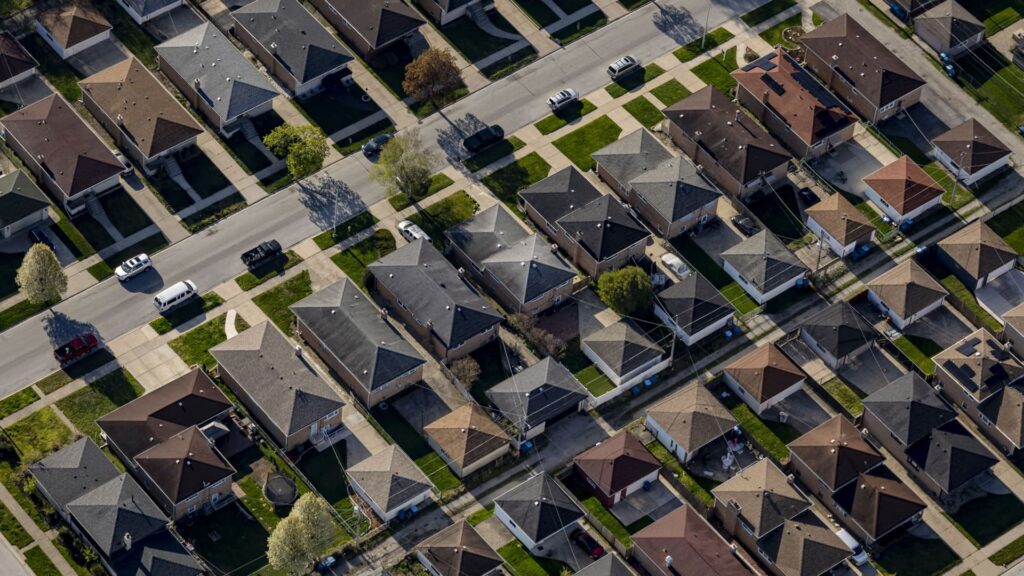April 26, 2023, Chicago South Suburban Area Home.
Brian Cassella Tribune News Service | Getty Images
A home is the largest investment most Americans make. Returns are disappearing.
According to the S&P Cotality Case-Shiller U.S. National Home Price NSA Index, U.S. home prices rose 1.5% in August compared to the same month last year, lower than the 1.6% annualized increase recorded in July.
House prices have not fallen yet, but they are weakening and rising at a slower pace than the current 3% inflation rate. This marks the fourth consecutive month of decline in housing wealth in real terms, according to the index.
Home prices in nearly every metropolitan market included in the index fell month-over-month in August. Only Chicago saw a rise. Although home prices are seasonal and typically decline during this time of year, this downturn was more severe than typical seasonal patterns.
Much of that is due to persistently high mortgage rates, which remained stagnant during the summer months when much of the index was measured. (The index is a 3-month moving average). Interest rates have since fallen, but not by much. The average interest rate on a 30-year fixed mortgage started at just under 7% in June and had fallen to 6.5% by the end of August, according to Mortgage News Daily. Currently it is 6.19%.
“Mortgage rates remain above 6.5%, continuing to weigh on buyer demand even during what would otherwise be the busy summer season. The combination of high funding costs and prices remaining near record highs has limited trading activity,” Nicholas Godek, head of fixed income products and commodities at S&P Dow Jones Indices, said in a news release.
The New York metropolitan area had the highest rate of price increase in August at an annual rate of 6.1%, followed by Chicago at 5.9% and Cleveland at 4.7%. Meanwhile, prices in Tampa were down 3.3% year over year, Phoenix down 1.7%, and Miami down 1.7%.
The West also slumped, with San Francisco down 1.5%, Denver down 0.7% and San Diego down 0.7%. Seattle also turned slightly negative.
“The markets that experienced the steepest increases during the pandemic are now experiencing the biggest corrections, while more affordable metros with stable local economies are holding up better,” Godek said. “While this adjustment may ultimately lead to a more sustainable market, for now homeowners are seeing their real equity eroded, while buyers face the dual challenge of rising prices and high borrowing costs.”
A separate study from the Federal Housing Finance Agency (FHFA), which measures the price of homes with conforming loans, showed home prices rose 2.3% in August from a year earlier and were up 0.4% from July.
“This relative month-over-month strength reverses the recent downward trend and signals some stabilization in home prices across the country after months of month-over-month declines,” Eugenio Aleman, chief economist at Raymond James, said in a statement. “House price growth could be a bit more stable for the rest of the year as the effects of lower mortgage rates support increased housing activity.”


